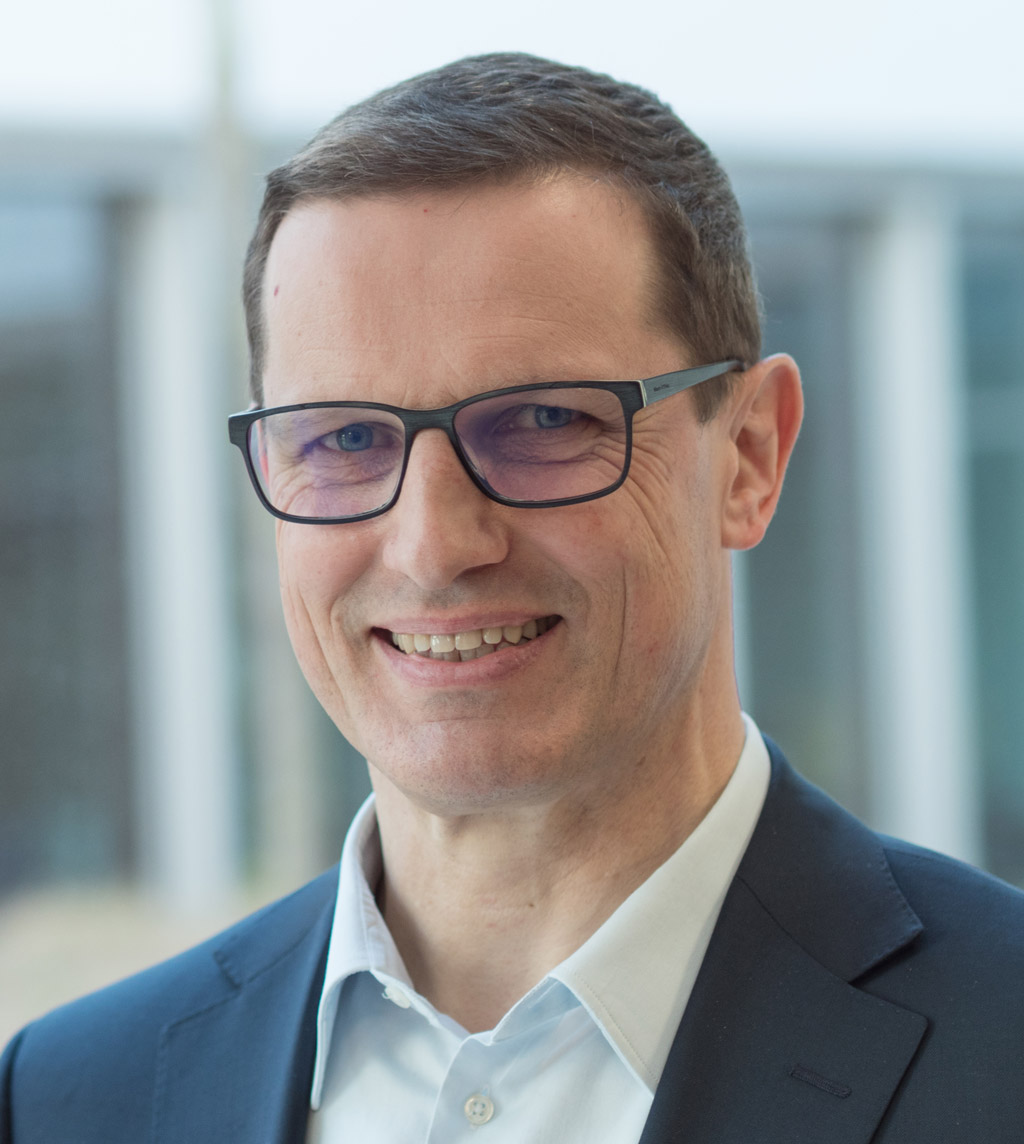Mathematics professor appointed third director of Fraunhofer IIS
On November 1, 2019, the Institute’s management team was joined by a renowned expert in the field of artificial intelligence (AI), with a particular interest in mathematical optimization. As the largest institute of the Fraunhofer- Gesellschaft, we have been scaling up our activities in this area for several years. At Fraunhofer IIS, Martin established the ADA Lovelace Center. »ADA« stands for »Analytics, Data, Applications«, reflecting the Center’s mission of collecting and analyzing large volumes of data with a view to improving existing processes and business models or developing new ones. In pursuit of these goals, the Center employs methods from the fields of artificial intelligence, machine learning, and mathematical optimization.
Born in Memmingen in 1965, Martin studied at the University of Augsburg before completing a doctorate and then his habilitation thesis at the Technical University of Berlin. After a stint as a deputy head of department at the Zuse Institute, he accepted a post at the Technical University of Darmstadt in 2000, where he later served as vice president from 2008 to 2010. In 2010, he was appointed to the Chair of Economics, Discrete Optimization, and Mathematics at Friedrich- Alexander-Universität Erlangen-Nürnberg (FAU). In 2015, he also took the helm of our Analytics department in the Center for Applied Research on Supply Chain Services (SCS).
Alongside the technical management of the ADA Lovelace Center, the new Institute director’s responsibilities will lie largely with the Nuremberg location, which is home to the Positioning and Networks division and the SCS.
Martin’s research areas include studying and solving general mixed-integer linear and nonlinear optimization problems, including development and mathematical analysis of suitable models, and design and implementation of efficient algorithms to solve them. Key areas of application include problems posed by transport, traffic and energy optimization. He is especially motivated to see his findings implemented in industrial applications.
